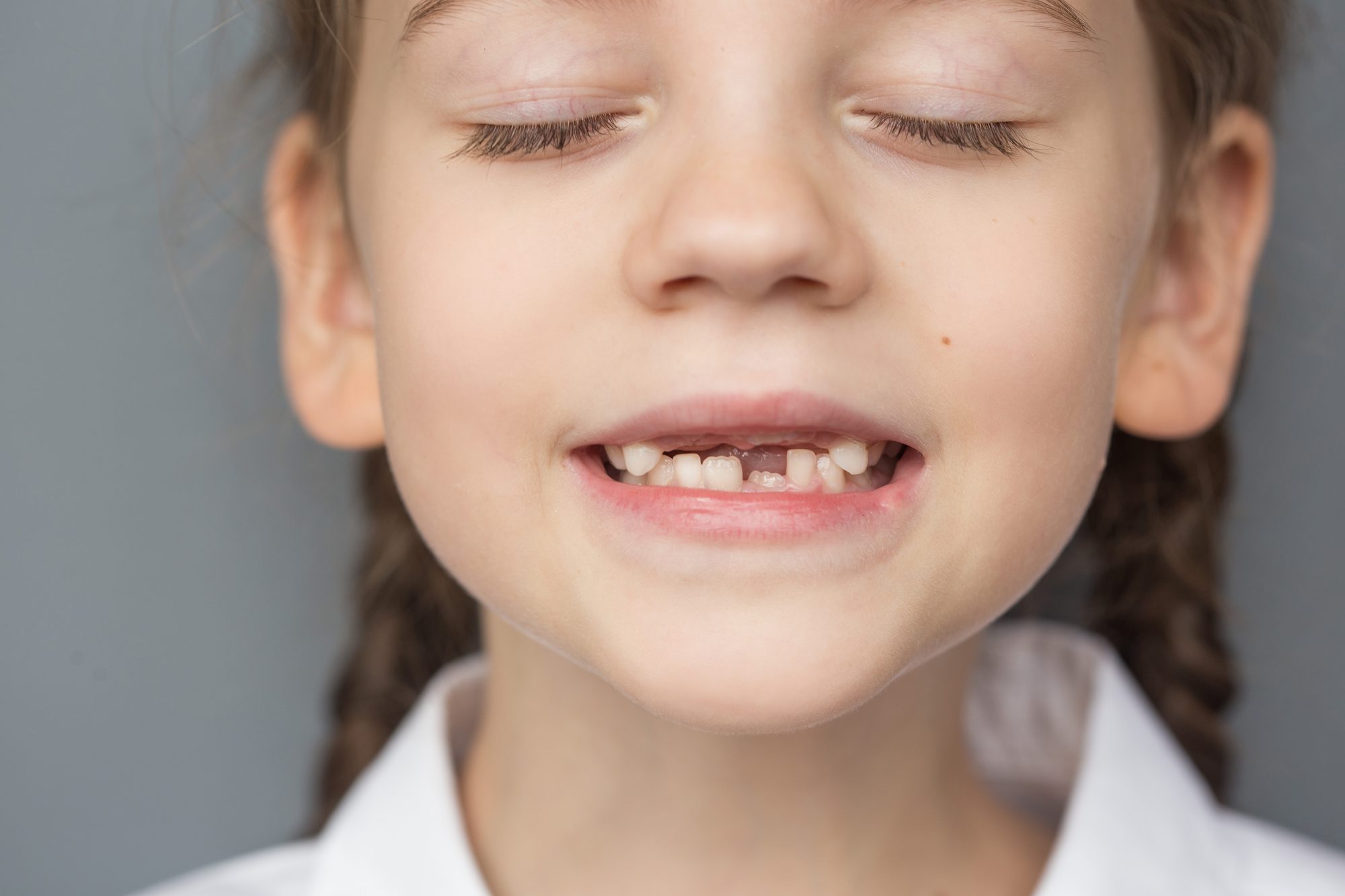
Have you noticed that your child’s incoming adult teeth appear more yellow or darker than their baby pearly whites? If your child is adhering to proper oral hygiene, then you can relax. This type of discoloration is normal and can be attributed to the fact that permanent teeth have more dentin (dense inner tissue) than baby teeth. Enamel (surface of the teeth) is translucent. Sometimes, the dentin is visible and appears more yellow and larger than little, light-colored baby teeth. As your child begins to lose their baby teeth, their permanent teeth will start to appear more uniform.
Other than the natural circumstances of normal development, Overland Park Pediatric Dentist Dr. Matt unravels four potential reasons why your child’s emerging teeth may appear darker or discolored.
1. Plaque and Tartar Accumulation
When kids don’t brush or floss their teeth as thoroughly or often as they should, plaque is highly likely to develop. Plaque is a film of bacteria that naturally forms on the teeth and has a yellowish, buttery tint. However, if plaque is not removed with frequent flossing and brushing, it solidifies and transforms into thick, yellow tartar. Tartar can only be removed with tools found in the hands of a dental hygienist.
The American Academy of Pediatric Dentists (AAPD) recommends that children visit their pediatric dentist every six months for a check-up and dental cleaning to remove caked-on plaque and tartar.
2. Diet
You may be surprised by what foods and drinks can stain your child’s teeth. Some enamel-altering ingredients to look out for are:
- Acidic foods (such as citrus, tomato, and curry sauce)
- Tannins (found in tea, coffee, and red grape juice)
- Citric acid (serves as a preservative for many foods, including sports drinks and sour candy)
3. Trauma
Accidents can happen at any moment. If your child suffers from a blow that damages their inner dental tissue, their teeth may appear stained.
If your child has one tooth that appears yellow, brown, gray, or black after an accident, speak with your pediatric dentist immediately. This is considered a dental emergency and requires immediate action to save the tooth and inner nerves.
4. Certain Antibiotics
Doctors prescribe antibiotics to fight bacterial infections, but an unwanted side effect can be dental discoloration in children who are exposed during tooth mineralization and this can happen:
- In utero, during the second and third trimester of pregnancy
- Via breast milk, if the mother is taking it
- When children under the age of eight take it
Even though tetracycline may be the most common, doxycycline and minocycline can also produce similar consequences. Because this family of antibiotics binds with the calcium ions in teeth, they will oxidize as they erupt. In this scenario, teeth will first appear fluorescent yellow and may darken to brown. Thankfully, today’s doctors typically only prescribe tetracycline to children over the age of eight and adults.
Find Out More About Pediatric Dentistry in Overland Park, KS
The truth is that not all dentists are trained or equipped to handle the oral health needs of constantly growing children. At Smiles Dentistry for Kids, Dr. Matt and his dedicated Overland Park, KS team facilitate a kid-friendly environment to provide oral health education for young minds. Pick a pediatric dentist with years of experience and call (913) 685-9990 or message us online right now.